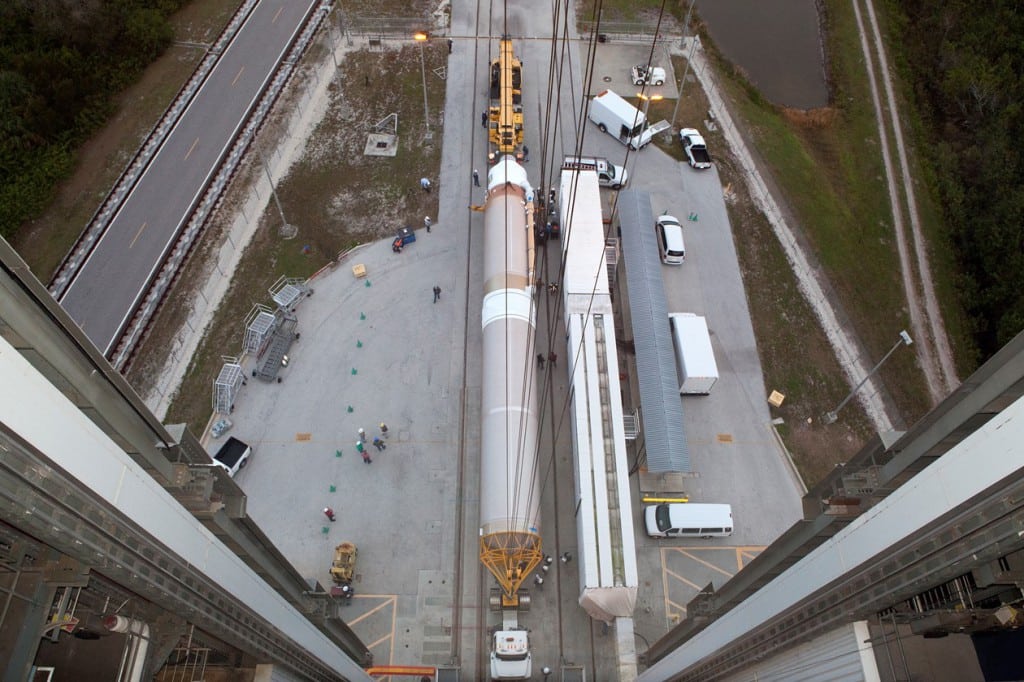ULA ID’s Source of Atlas 5 OA-6 Mission Anomaly

An Atlas V booster is erected on the Mobile Launch Platform inside the Vertical Integration Facility at Cape Canaveral’s Space Launch Complex-41. Photo: ULA
[Via Satellite 04-29-2016] United Launch Alliance (ULA) has traced the cause of an anomaly that occurred during the March 22 OA-6 Cygnus mission for Orbital ATK to the RD-180 engine’s Mixture Ratio Control Valve (MRCV). According to the company, the assembly of the valve caused a reduction in fuel flow during the boost phase of the flight.
Despite the anomaly, which resulted in a premature first stage shutdown, the AO-6 mission went off without a hitch. The Atlas 5’s Centaur upper stage compensated for the first stage anomaly, delivering Cygnus to a precise orbit well within the required accuracy.
In addition to analysis and testing, ULA is now inspecting all RD-180 engines prior to use. Last Friday, in preparation for the launch of MUOS 5, the Atlas 5 completed the Launch Vehicle on Stand (LVOS) operation, erecting the rocket into the Vertical Integration Facility at Cape Canaveral Air Force Station. LVOS will allow configuration of the vehicle to support RD-180 engine inspections and confirm all engine components are ready for launch. The Atlas 5 MUOS 5 launch is targeted for early summer; a new launch date has not been secured on the Eastern Range.
ULA is reviewing the Atlas 5 launch schedule for other missions manifested for this year. The company expects to complete all missions slated for this year by the end of the year, including NASA’s Origins, Spectral Interpretation, Resource Identification, Security-Regolith Explorer (OSIRIS-REx), which will remain in early September to support its critical science window.